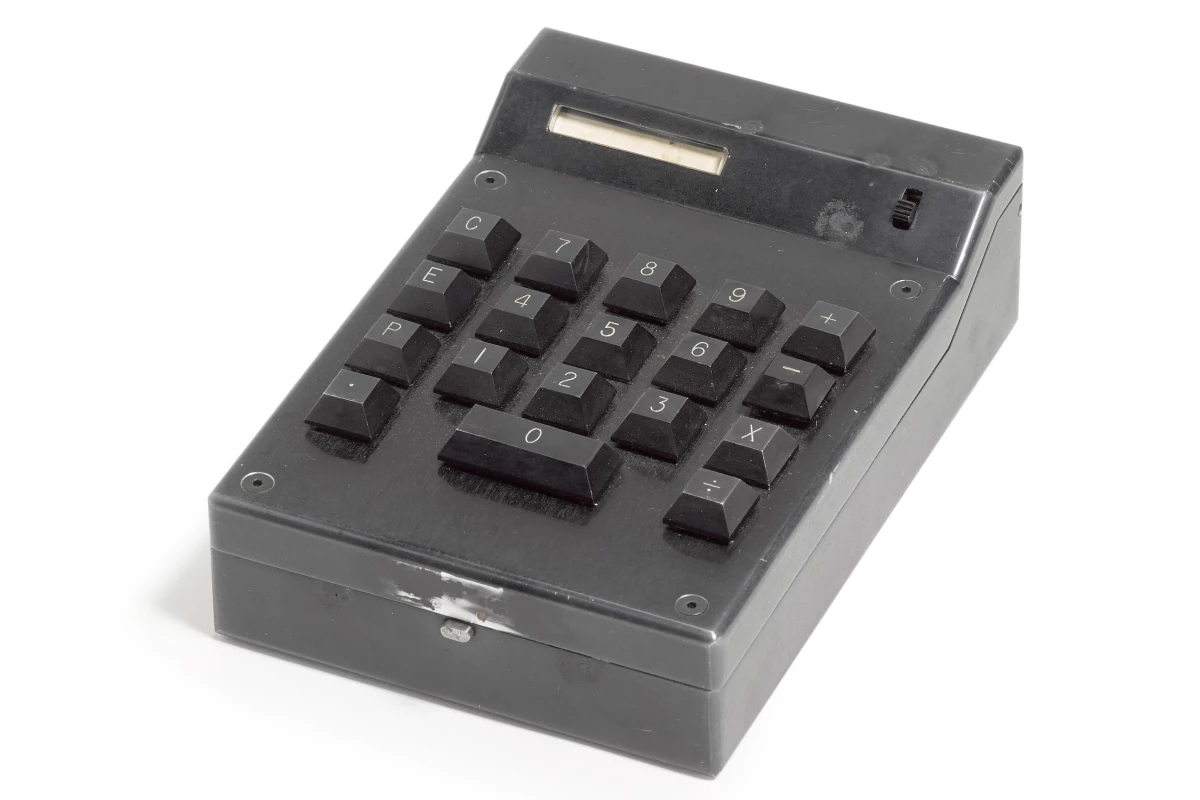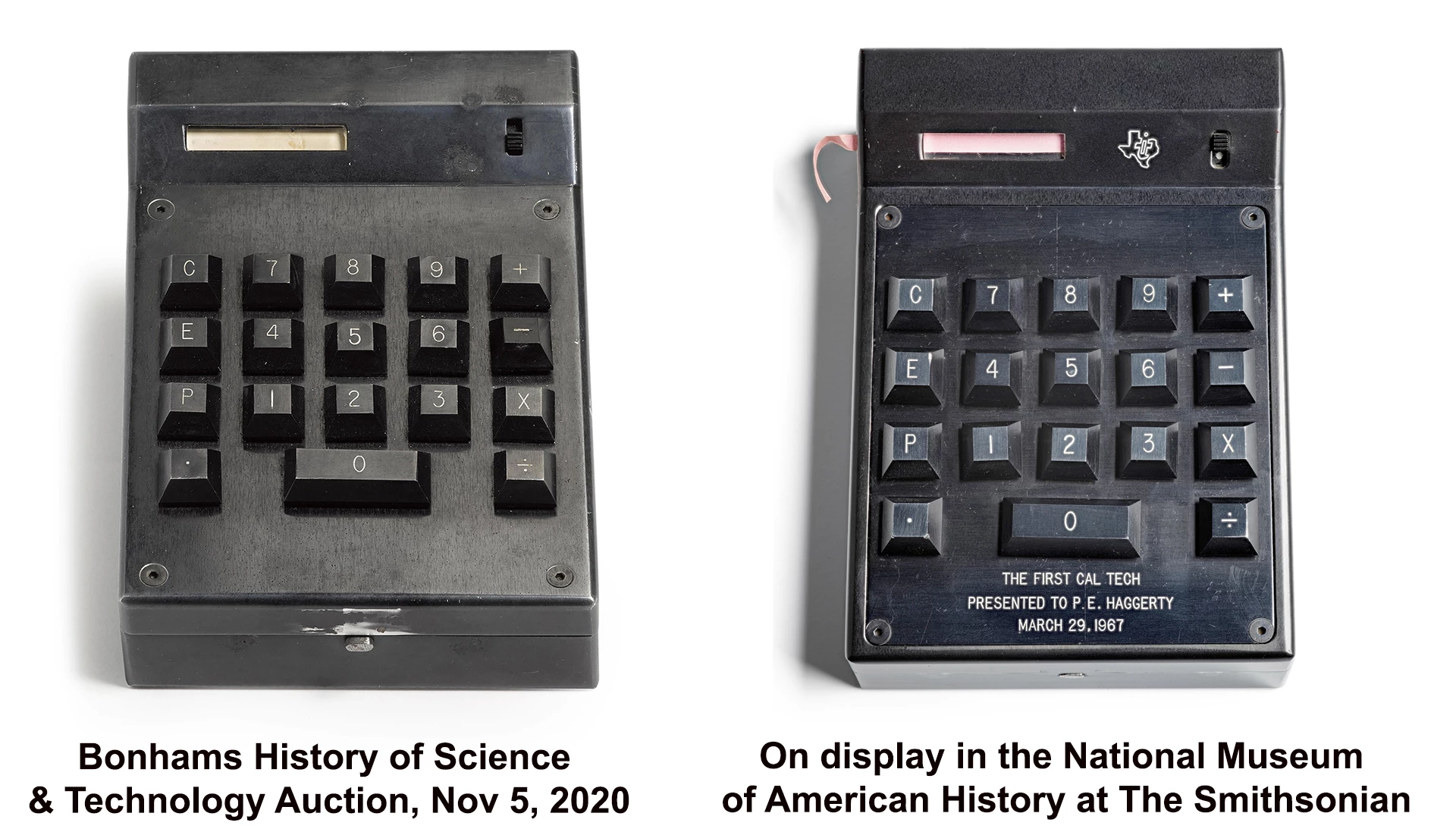Bonhams’ annual History of Science & Technology auction never fails to delight, and the next sale, scheduled for November 5, has one of the most exciting technology offerings we’ve ever seen – the original prototype of the Texas Instruments CalTech Prototype Handheld Calculator from the estate of original team member Jerry Merryman.
Merryman is one of three people Texas Instruments credited with inventing the world’s first handheld electronic calculator and his estate, career artifacts and papers are going to auction following his death at age 86 in February, 2019.
The Texas Instruments CalTech was history's first handheld calculator and the only other known prototype is on display in the National Museum of American History in the Smithsonian.
As extraordinary as it might seem that such a landmark machine in the history of computing is going to be available at public auction, it's even more remarkable that the calculator has an estimate in the US$30,000 to $50,000 range – our take is that this machine is of immense historical significance and could sell for an order of magnitude more than the estimate, perhaps two orders of magnitude … the Smithsonian’s reverence for its identical twin bears testimony to the importance of this technological milestone.

Bonhams' expert curation of the sale has ensured that many such lots of landmark mathematical status are available, and as we have witnessed over the last few decades of watching science and technology auctions, landmark science and technology manuscripts, books and scientific apparatus remain significantly undervalued compared to items of entertainment and sporting significance.
In brief, that means there are some bargains to be had in addition to historical perspective.
We remain convinced that the value of this technology-related marketplace will eventually correct itself, and hence some of the landmark mathematical objects in this sale would make an ideal gift for a bright young mathematics student, emphasizing to them the wonder of mathematics, and the compelling edict that there is always a better way, at the same time as eventually being worth considerably more in the future than they are today, meaning they will think kindly of you long after your demise.
The historical significance of the first portable electronic calculator will at first be difficult to explain to people 40 years of age or younger. For starters, this device hails from just 53 years ago and it can only do four things: add, subtract, multiply and divide numbers. These simple functions were one of the very first things a mobile phone could do other than making phone calls, and under 40s have always had mobile phones.

In the timeline of technology history though, the integrated circuit was the first step towards the microchip, and it unleashed a number of "killer apps" during the 1960s, most notably the portable radio (democratizing music) and the handheld calculator that banished long tedious calculation for all subsequent generations.
For children of the 21st century, it is almost impossible to comprehend just how recently human computers whose sole job was to wrestle long multiplications and divisions eight hours a day, five days a week, were the norm, or how their parents had learned how to use logarithmic tables and a slide rule.
This sale is rich with the architecture that preceded the handheld calculator – the many frail, problematic and frustratingly slow solutions created for the task of calculation across the previous few centuries, including:
Blaise Pascal’s six digit “Pascaline” calculator from 1645

Estimate: US$ 6,000 - 9,000
This is a replica of the Pascaline calculator that French mathematician Blaise Pascal invented to assist his father in his work as a tax collector in Rouen. Designing the machine as a 19-year-old in 1642, Pascal had no prior work of any kind upon which to base this invention and its mechanisms, and over the next three years he built more than 50 prototypes as he refined this device, the first mechanical calculator, which he eventually presented to the public in 1645.
Pascal had one of the most extraordinary and fertile minds in history, and would go on to influence the development of economics, probability theory, the scientific method and so much more.
This machine inspired the development of several other early mechanical calculators, in particular fascinating Gottfried Leibniz (the co-inventor of calculus) to develop his Liebniz wheels after trying unsuccessfully to further develop this machine to handle multiplication.
This is not an original of the first machine that could add and subtract numbers, but a replica of a Pascaline calculator. Still, it is an authentic replica and only nine originals are known, all residing in museums across Europe. In our mind, this lot represents ridiculous value at the estimated price.
A century-old cylindrical slide rule by Edwin Thacher

Estimate: US$800 to $1200
This marvelous device is a cylindrical slide rule that was patented in 1881 by American Edwin Thacher, who had come up with the idea while using a conventional slide rule in his initial occupation of designing railway bridges. This particular model was manufactured exactly 100 years ago, and at the time, was the most powerful computer you could buy. There’s one in the Smithsonian, you can read Thacher’s own words in his patent application here, and for an additional $50 you can read buy a replication of a book written about it in 1884. It still works just as well now as it did 100 years ago and the best part of the story is the reason Thacher invented the cylindrical rule – it enabled him to calculate with the accuracy of a conventional slide rule 59 feet long. We’re guessing that a lot of Edwin’s bridges are still standing.

The history of computation and calculation is remarkably well represented at this sale, and should be a delight for anyone knowledgeable about the use of practical mathematics prior to 1980. The above is just a small sampling of the delights on offer.
More information is available at Bonham's History of Science and Technology, including Air and Space auction page.













